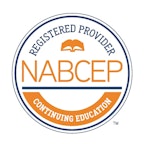Understanding IEEE 1547-2018 – Interconnection Standard for DER on Distribution

About this course
In 2023, it is expected that many families/models of smart inverters will be certified by testing laboratories in accordance with UL 1741 SB, the test procedures for IEEE 1547-2018, and will become commercially available. In addition, more states or other authorities which govern interconnection requirements will have either completed the integration of IEEE 1547-2018 into their interconnection rules and agreements or made additional progress in that area.
This is a technical course, which assumes you have some understanding of distributed energy resources (DER), particularly inverter-based resources (IBR), and utility distribution systems and engineering.
In this four-module course, you get detailed discussion and reference material on IEEE 1547-2018. We cover the background and need for the different requirements, present default and allowable ranges of inverter settings, and discuss how utilities have been integrating the requirements into their interconnection procedures and specifications.
- Background and context for the creation and approval of IEEE 1547-2018 - IEEE Standard for Interconnection and Interoperability of Distributed Energy Resources with Associated Electric Power Systems Interfaces
- General interconnection technical specification and performance requirements
- Reactive power capability and voltage/power control requirements
- Response to Area EPS abnormal conditions
- Power quality
- Islanding
- DER on distribution secondary grid/area/street (grid) networks and spot networks Interoperability, information exchange, information models, and protocols
- An overview of IEEE 1547.1-2020 IEEE Standard Conformance Test Procedures for Equipment Interconnecting Distributed Energy Resources with Electric Power Systems and Associated Interfaces
- A discussion of IEEE 1547.9-2022 IEEE Guide for Using IEEE Std 1547™ for Interconnection of Energy Storage Distributed Energy Resources with Electric Power Systems
What You Get
- Copy of all course slides
- Links to online reference materials
- Access to all video lectures for one year after course
- Online interaction with course instructor Tim Taylor during the course
- One downloadable copy of IEEE 1547-2018 (additional fee of $65)
- NABCEP CEUs (anticipated once course is completely developed)
Who Should Take This Course
- DER developers, operators, and aggregators
- DER system engineers, consultants, and EPC’s
- Utility distribution management, engineers and subject matter experts involved in DER interconnections
- DER equipment vendors
- Bulk power system operators and regional reliability coordinators with interest in distribution DERs and their impacts on bulk power systems
The course is technically-oriented with a focus on the connection of inverter-based DER, such as solar PV, to utility distribution systems. It is recommended that attendees have a background in the electric operation of distribution systems and a basic understanding of inverter operation.
Higher demand for individuals with a working knowledge of IEEE 1547-2018 will occur as higher penetrations of DER are interconnected to distribution systems. The Inflation Reduction Act (IRA) of 2022 means that the amount of new utility-scale solar PV is forecast to increase dramatically. The IEEE 1547-2018 requirements being adopted will enable more DER connections while maintaining safe and reliable distribution system operation, balanced with secure and reliable operation of the bulk power system.
Individuals and companies will need to know IEEE 1547-2018 to facilitate interconnection to utility distribution over the coming decade. They will need to know what constrains the application of DER to utility feeders, what it means for inverters to be certified with the new UL 1741 SB that is the companion to IEEE 1547-2018, and what are the default settings and ranges of allowable settings of inverters specified in 1547-2018.
Course outline
Welcome • 5 assignments
Orientation Materials
- Set up email notifications and your student profile
- Introduce yourself on the discussion board
- Getting a copy of the IEEE 1547-2018 Standard
- Course Slides (.pdf)
- Totally optional: iPhone App for taking this class (50 seconds)
Module 1 • 15 assignments
Background/Context and General Requirements in IEEE 1547-2018
- Course Introduction from Tim (10:23 minutes)
- Industry Context and Need for IEEE 1547-2018 (11:36 minutes)
- NERC 2020 Reliability Guideline: Bulk Power System Reliability Perspectives on the Adoption of IEEE 1547-2018 (.pdf)
- Updating 1547-2003 to 1547-2018 (17:50 minutes)
- Smart Inverters and IEEE 1547-2018 Adoption (17:38 minutes)
- Comparison of IEEE 1547-2018 and Other Interconnection Standards (.pdf)
- Smart Inverter Data Sheet (.pdf)
- The IEEE 1547 Standard and Clauses 1, 2, and 3 - Part 1 (18:32 minutes) Preview
- The IEEE 1547 Standard and Clauses 1, 2, and 3 - Part 2 (19:57 minutes)
- Clause 4 - General interconnection technical specifications and performance requirements - Part 1 (19:16 minutes)
- Disturbance Performance Terminology (.pdf)
- Clause 4 - General interconnection technical specifications and performance requirements - Part 2 (23:03 minutes)
- Read: Summary of Smart Inverters and IEEE 1547-2018 (.pdf)
- IREC IEEE 1547-2018 Adoption Tracker
- Module 1 Quiz
Module 2 • 11 assignments
Voltage/Reactive Power and Response to Abnormal Operating Conditions
We cover the two Normal Operating Performance Categories (A & B) that the standard has defined for voltage/reactive power capabilities, and we discuss the different voltage control capabilities, particularly provided by smart inverters.
In the second half of this module, we look at the required response of DER to distribution events, and we look at how higher penetrations of DER such as Solar PV have contributed to abnormal events on the Bulk Power System in the US. We also look at the three Abnormal Operating Performance Categories (I, II, & III) that the standards have defined for DER, and look at key DER concepts such as voltage and frequency ride-through, cease-to-energize, momentary cessation, and frequency-droop.
- Voltage Control on Utility Distribution (22:13 minutes)
- Reactive Power and Voltage Control Requirements - Part 1 of 2 (14:43 minutes)
- Reactive Power and Voltage Control Requirements - Part 2 of 2 (21:58 minutes)
- Benefits of Smart Inverter Voltage Regulation in Hawaii and California
- Protection for DER Owners When Volt-Watt Reduces DER Real Power Output
- Abnormal Operating Conditions - Part 1 of 2 (13:02 minutes)
- NERC 2020 Reliability Guideline: Bulk Power System Reliability Perspectives on the Adoption of IEEE 1547-2018 (.pdf)
- Abnormal Operating Conditions - Part 2 of 2 (19:42 minutes)
- Voltage Trip and Ride-Through (22:21 minutes)
- Frequency Trip, Ride-Through, and Other Requirements (17:16 minutes)
- Module 2 Quiz
Module 3 • 9 assignments
Power Quality, Islanding, Secondary Networks, and Interoperability
- Clause 7 - Power Quality (21:03 minutes)
- Over-voltages and Grounding (19:23 minutes)
- Clause 8 - Islanding (16:37 minutes)
- Anti-Islanding Detection Details (.pdf)
- Clause 9 - DER on distribution secondary grid/area/street (grid) networks and spot networks (19:47 minutes)
- Xcel Energy Requirements for Connecting DER to Secondary Networks (.pdf)
- DER on Spot Network - Colorado Convention Case Study (.pdf)
- Clause 10 - Interoperability, information exchange, information models, and protocol (24:27 minutes)
- Module 3 Quiz
Module 4 • 15 assignments
Verification and Testing, IEEE 1547.1, Inverter Settings, IEEE 1547.9
- Clause 11 - Test and Verification Requirements (21:19 minutes)
- Inverter Certification for UL 1741 3rd Edition, IEEE 1547-2018, IEEE 1547.1-2020 (.pdf)
- IEEE 1547.1 - IEEE Standard Conformance Test Procedures for Equipment Interconnecting Distributed Energy Resources with Electric Power Systems and Associated Interfaces (15:26 minutes)
- Settings for IEEE 1547-2018 Functionality (12:58 minutes)
- Inverter Settings (.pdf)
- Read: Testing of Advanced Inverters (.pdf)
- Inverter Settings Example - NE Utility Required Profile (.pdf)
- National Grid Inverter Settings - January 1, 2023 (.pdf)
- Hawaiian Electric Utility Required Profile (.xlsx)
- Configuring an Inverter with a Settings Profile
- IEEE 1547.9 - IEEE Guide for Using IEEE Std 1547™ for Interconnection of Energy Storage Distributed Energy Resources with Electric Power Systems (29:42 minutes)
- Optional: Availability of Inverters Conforming to IEEE 1547-2018 and UL 1741 SB (3rd Edition)
- Optional: IREC's Decision Options Matrix for IEEE 1547-2018 Adoption
- Module 4 Quiz
- NY State Utilities - Summary of Inverter Settings UL 1741 SB Jan. 2023
Conclusion • 6 assignments
Feedback and Additional Resources
- Optional: Get IEEE Continuing Education Credit for Completing this Course (.docx)
- IEEE 1547-2018 References (.pdf)
- 1 Year of Access to Course Materials
- Feedback: 2-minute Exit Survey
- Consider Joining as a HeatSpring Member
- Certificate of Completion: Request a Certificate
Continuing Education Units
Approved for the following CEUs
- NABCEP Advanced Credit Hours
- NABCEP JTA
- NABCEP RE Elective
- 1 IEEE CEUs
Approved NABCEP CEU Hours
| NABCEP Credential | Advanced Hours for Exam | Recertification CEU Hours | NEC | JTA | RE Elective | Building or Fire Code |
|---|---|---|---|---|---|---|
| 10 | 10 | 0 | 10 | 10 | 0 | |
| 0 | 10 | 0 | 0 | 0 | 0 | |
| 10 | 10 | 0 | 10 | 10 | 0 | |
| 10 | 10 | 0 | 10 | 10 | 0 | |
| 10 | 10 | 0 | 5 | 10 | 0 | |
| 10 | 10 | 0 | 10 | 10 | 0 | |
| 0 | 0 | 0 | 0 | 0 | 0 |
NABCEP Registered Provider

This course counts towards the training requirements for taking NABCEP professional certification exams and CEUs for renewing all certifications.
Instructor

Tim Taylor
Tim has spent over 35 years in electric generation, transmission, and distribution. He recognizes the urgency to act on climate change. His primary focus is collaborating with stakeholders to understand the complexities of generation and storage interconnections to the electric grid. This encompasses the technical considerations, interconnection procedures and...



